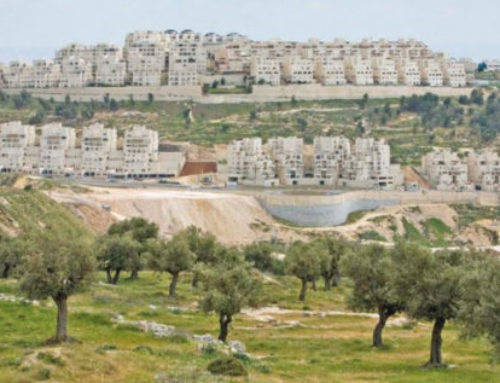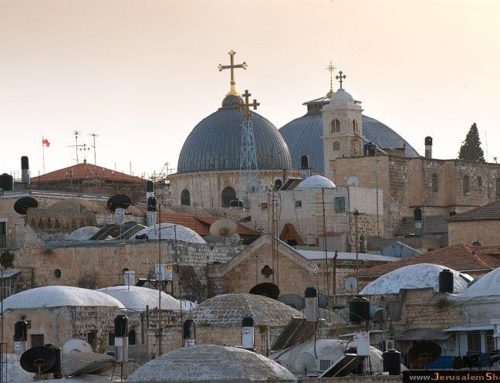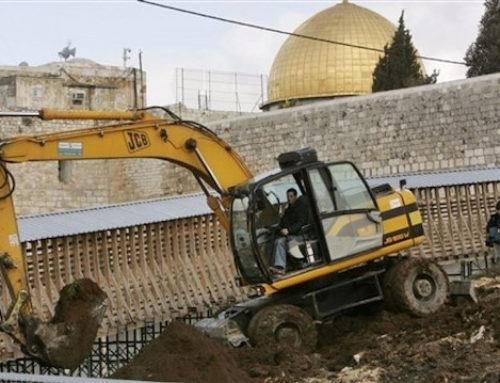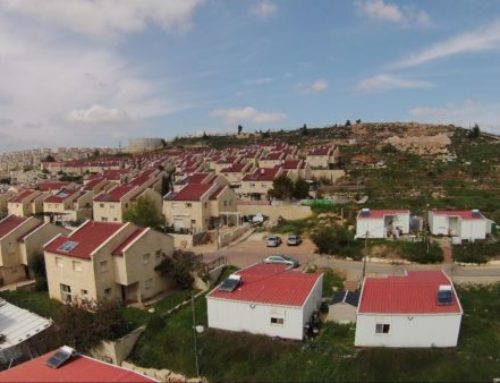
This wall was built on the ruins of an ancient Roman wall that spanned 3662 meters and had a height of 11.6 to 12.2 meters.[2] Thirty four watchtowers were also built throughout the wall to keep watch for invading enemies and alert the inhabitants about their approach. The current wall has eleven gates, seven of which are permanently open for public: the gate of the tribes (Al-Asbat), Herod’s Gate (Al-Sahirah), the Damascus Gate (Al-Amoud), the new gate (Al-Jadeed), the Hebron gate (Al-Khalil), the Moroccan Gate (Al-Magharibah), the Gate of the Prophet David (Al-Nabi Dawoud). The remaining four are locked.[3]
The land in the Old City, which is estimated to be 900 acres, and includes [4] the wall of Al-Buraq, the Holy Church of Sepulchre, Al-Aqsa mosque and the Dome of the Rock, makes up 71% of the city’s total area . It consists of four main neighborhoods or quarters: the Islamic Quarter, the Christian Quarter, the Jewish Quarter, and the Armenian Quarter.[5]
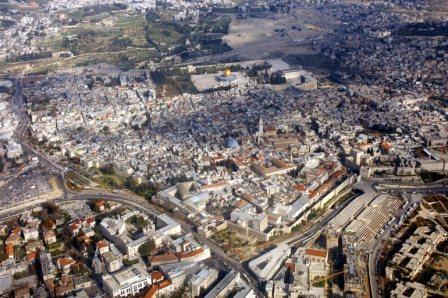
The Old City was occupied by Israel in 1967 after the Six Days War and annexed to the western part occupied since the establishment of the state of Israel in 1948. The city, since then, has suffered from number of problems. A 2010 residential consensus estimates that the city’s population density is 36.6 individuals per acre.[6] The city has also been subject to the brutal Israeli policy of Judaization which not only changes names,features of , but also significantly alters the economic, social, and political structure of the city, sanctions excavations and tunnels beneath it, imposes excessive taxes and prevents its inhabitants from construction–all of which have led to a situation of economic stagnation, overcrowding, and high unemployment.[7]
In 1981, UNESCO listed the Old City of Jerusalem on the World Heritage List. it was not until 1982 that the UN moved it to “the World Heritage at Risk” list although this move was preceded by the Israeli issuance of the 1980 Jerusalem Basic law which considers Jerusalem, complete and united, the capital of Israel. Security Council Resolution 478 of 1980 in which the council condemned the Israeli attempt to annex and control East Jerusalem and the Israeli Basic Law is null and void then considered by the international community to be the capital of the Palestinian State, was also issued in response to that law..

At the end of the nineteenth century and the beginning of the twentieth, the increase in population of Jerusalem among both Arabs and Jews necessitated an urban expansion that moved beyond the wall towards the south and the north west.This led to the emergence of the New expanded Jerusalem.[8]
[1] “The Old City of Jerusalem: Numbers and Facts,” last modified March 23, 2017, http://www.aljazeera.net/encyclopedia/citiesandregions/2017/3/11/أرقام-وحقائق-عن-البلدة-القديمة-بالقدس
and “Geography of Jerusalem: Center of Soul and Homeland,” last modified October 3, 2010, http://www.aljazeera.net/specialfiles/pages/030525e8-f9eb-49e0-af6f-726e6a39450c
[2] “Geography of Jerusalem: Center of Soul and Homeland,” last modified October 3, 2010, http://www.aljazeera.net/specialfiles/pages/030525e8-f9eb-49e0-af6f-726e6a39450c and “The Old City of Jerusalem: Numbers and Facts,” last modified March 23, 2017, http://www.aljazeera.net/encyclopedia/citiesandregions/2017/3/11/أرقام-وحقائق-عن-البلدة-القديمة-بالقدس
[3] “Geography of Jerusalem: Center of Soul and Homeland,” last modified October 3, 2010, http://www.aljazeera.net/specialfiles/pages/030525e8-f9eb-49e0-af6f-726e6a39450c
[4] “Geography of Jerusalem: Center of Soul and Homeland,” last modified October 3, 2010, http://www.aljazeera.net/specialfiles/pages/030525e8-f9eb-49e0-af6f-726e6a39450c
[5] “The Neighborhoods of the Old City of Jerusalem,” http://info.wafa.ps/atemplate.aspx?id=4242
[6] “The Old City of Jerusalem: Numbers and Facts,” last modified March 23, 2017, http://www.aljazeera.net/encyclopedia/citiesandregions/2017/3/11/أرقام-وحقائق-عن-البلدة-القديمة-بالقدس
[7] “The Old City of Jerusalem: Numbers and Facts,” last modified March 23, 2017, http://www.aljazeera.net/encyclopedia/citiesandregions/2017/3/11/أرقام-وحقائق-عن-البلدة-القديمة-بالقدس
[8] “The Old City of Jerusalem: Numbers and Facts,” last modified March 23, 2017, http://www.aljazeera.net/encyclopedia/citiesandregions/2017/3/11/أرقام-وحقائق-عن-البلدة-القديمة-بالقدس
and “Jerusalem Neighborhoods Behind the Wall: a Suspended Life,” last modified January 4, 2018, http://www.aljazeera.net/news/alquds/2018/1/3/أحياء-القدس-خلف-الجدار-حياة-مع-وقف-التنفيذ


